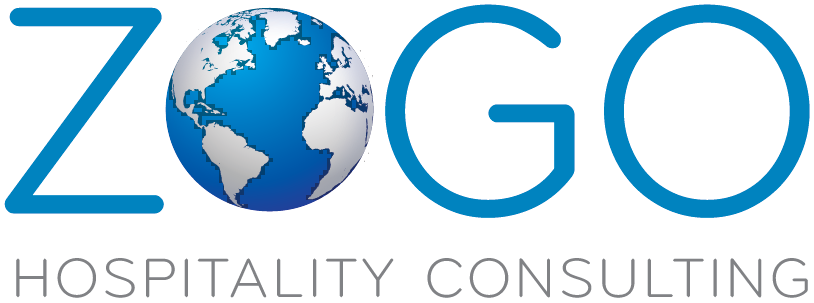Operational efficiency takes centerstage when margins are pressured and demand is low, becoming essential to the bottom line. Hotel processes must adapt to Guest’s behavior, new technology, and local requirements. Additional tasks, expanded workload and redundant activities directly affect efficiency. As the flow no longer looks the same, the process requires a time and motion check.
‘Time and motion’ studies were traditionally limited to calculate Opening staffing or for Quality Management Reviews. However, this type of analysis is not as complex as its sounds and can also be a great tool to stay on track and keep the workflow relevant to changing operational needs. Think of this as a 5-step pulse-check on operational efficiency:
1. Define Scope Then Method
Probably first on the list is Housekeeping with the increased Cleaning and Sanitation processes. Or any process that requires maintenance, service, or delivery of items to a room, or even both. Where would you like to revisit and rethink your productivity? Start small and later expand to other interlinking processes, one at a time.
Then define the method:
For significant change to Operations, consider utilizing a consultant for in-depth, impartial Time and Motion and Lean-review study across all business functions. These studies generally require andconstant observation of your personnel over many days and substantial analysis.
For a a pulse-check, your sampling may be smaller and run internally. Several Observers conduct this study over selected days for chosen morning/afternoon periods. And that, your team can do.
2. Choose Your Performers And Reporters
Performers:
The approach is the same whether you are studying the Room’s cleaning sequence, running the Coffee station in the AM operation, Linen distribution, or the In-room dining workflow. First, choose a combination of average and star team members to perform the required processes. Then, ask them to complete the process several times as usual, with no additional worry or task. Note and inform them: This is not an exercise to find low performers but rather to identify improvement points within the process itself. Them working naturally is the best contribution.
Reporters:
Your Observers don’t need a Ph.D.; they only need to be introduced to the study concept and purpose. Do not underestimate the power of involving local universities or even high school students. They will love to be on the ground and learn a tool transferrable to several industries. Besides, they will probably also bring great questions and ideas.
3. Time and Motion Observation
Split the process into tasks
What are the key steps that make out the overall process? Note them down. Don’t be overly detailed, but ensure a task line for each change in motion, tool, equipment, or sourcing. Keep blank lines in between so that you can add wait and movement times throughout the process consistently across all observations.
Timing
Observe and record the Start and End Time for each task. Some strongly recommend doing this on video, but use whichever is less overwhelming for your team.
Intuition counts
Ask observers to make a warning sign on their notes on any task that feels unnecessary, odd, repetitive, or inefficient. This could be anything from wait time (that is a ‘task’), bottlenecks (several workers awaiting a tool/elevator), duplicates, or seeing overlapping tasks. If it feels wrong, it probably is; we need their observation critical eye.
4. Crunch Basic Numbers
Once the Observation period is over, consolidate the numbers for each task (again, great work for students) and average the completion times and look at your peaks and lows. You are probably already surprised.
5. The Essential Step: Add Some Perspective To Make Decisions
Numbers always tell a story, but it may not necessarily be evident at first. Take the study a step further with some tools to gain perspective. The following will help you find the depth of challenges and a starting point for your constructive change:
Motion Study or Spaghetti diagram
A Spaghetti Chart is a visual representation of an activity process by tracing a continuous line. For example, take a standard room floorplan and mark in a single line how a Room Attendant moves around the room to clean a room from start to finish. The same method applies if you were to analyze how the linen gets distributed throughout the hotel’s floorplan. This chart helps to visualize transportation and movement and easily spot overlapping walkways, congestion, and delays. Simply put – rework and movement waste. The visual overview will help rearrange work areas or sequencing for optimum efficiency.
Value Analysis: Value-adding, Value Enabling, Waste
Define the value of each of the process tasks from the eyes of the Guest. Tasks can be value-adding (add value to end product/service, i.e., making a bed), value enabling (essential to allow value-adding activities later on or a business requirement), or waste (any other task, i.e., movement, inspection, etc.). Next, review how much of the average time is dedicated to each category, to determine how drastic your change measures will be. Note that you can take this tool to much further analysis, but this first approach will already help.
Prioritization
A similar approach helps you weigh parts of a process: Give a value from 1-5 to each task. You are likely to find out that you spend far less to much time on highest priority tasks, wasting time on lower priorities.
Once you have some data and can put it into perspective, the team will be in an excellent place to look for solutions to eliminate defects, rework, duplicates, waiting and non-value adding tasks, unnecessary movements of materials, or personnel order of priority. And then, you can establish what will be quick fixes or medium-term strategic changes.
Leaders realize reasonably quickly that Time and Motion exercises are a simple and effective tool for an efficiency pulse-check. From then onwards, the mindset changes to pro-actively generate value and eliminate waste every step of the way. Then you can go back to run your progress-based operation.
